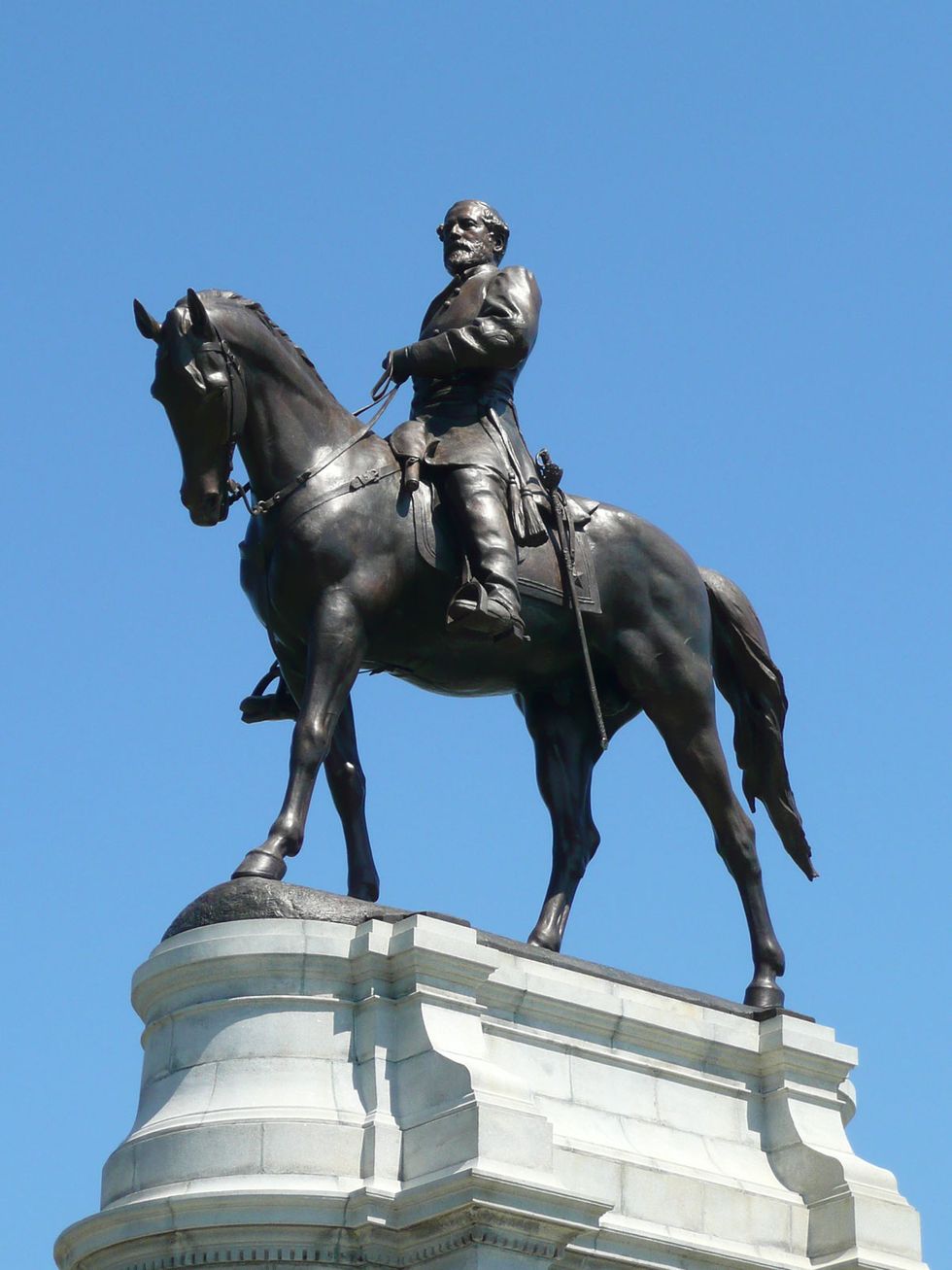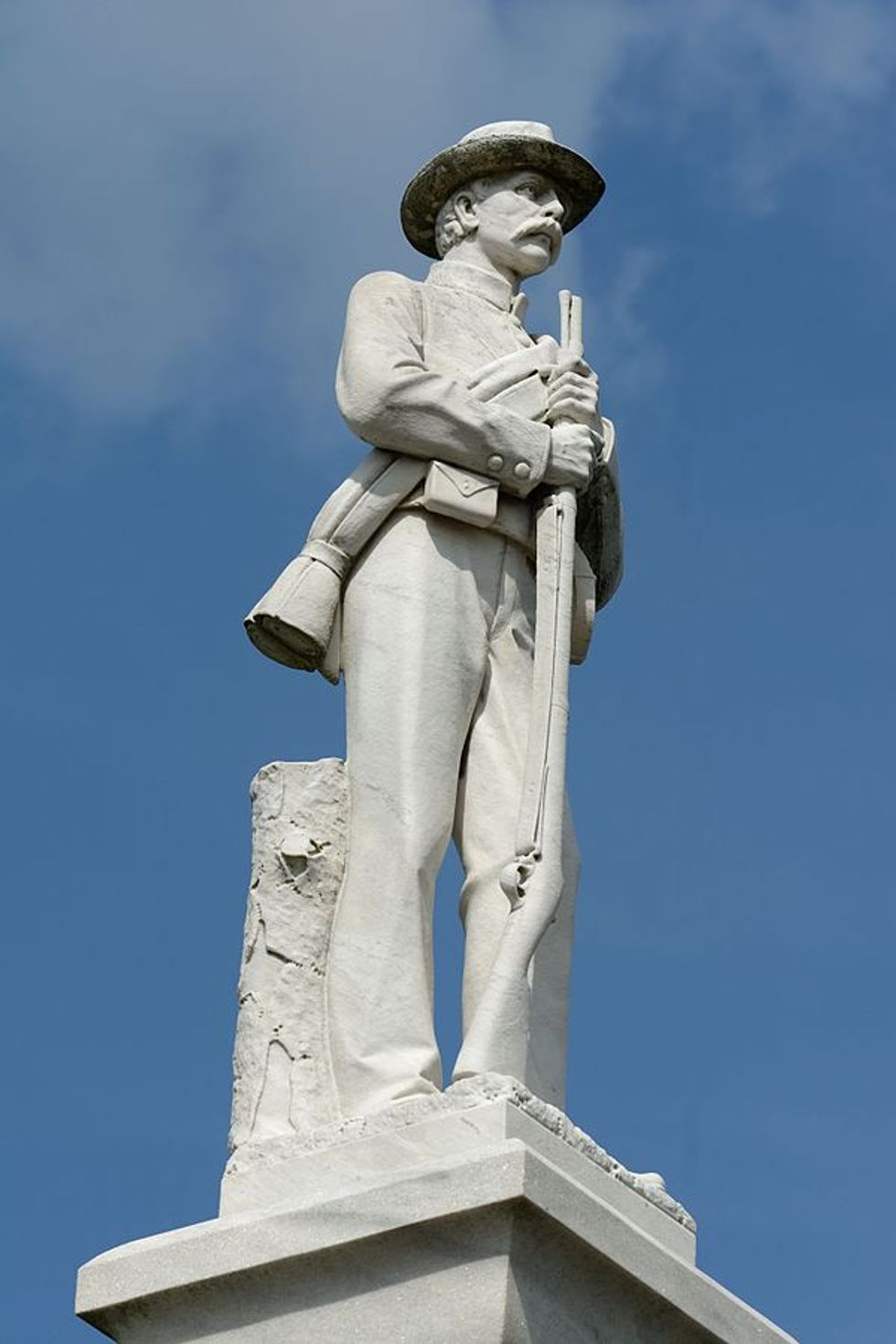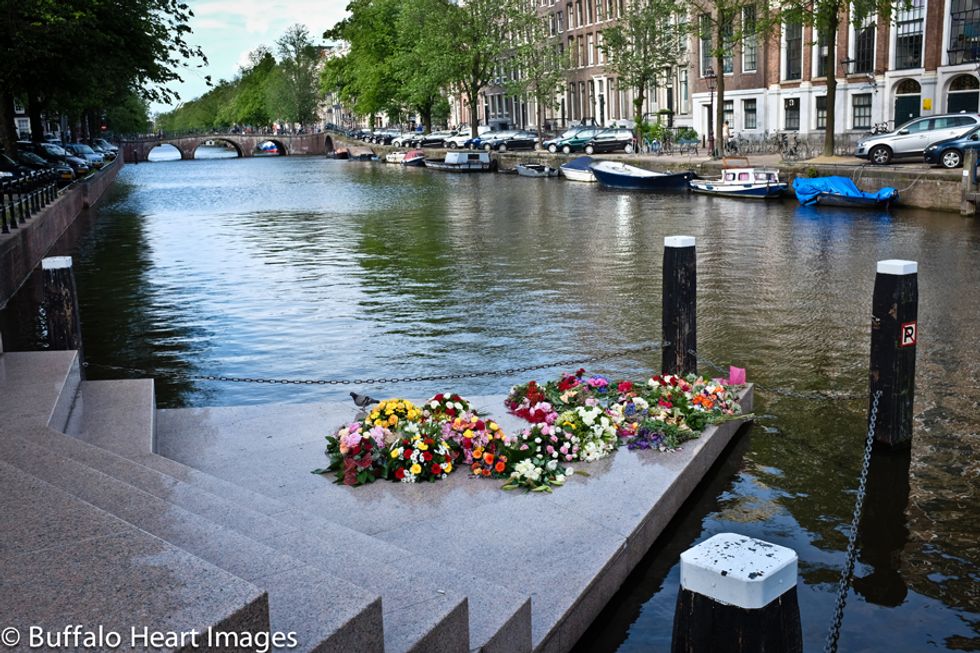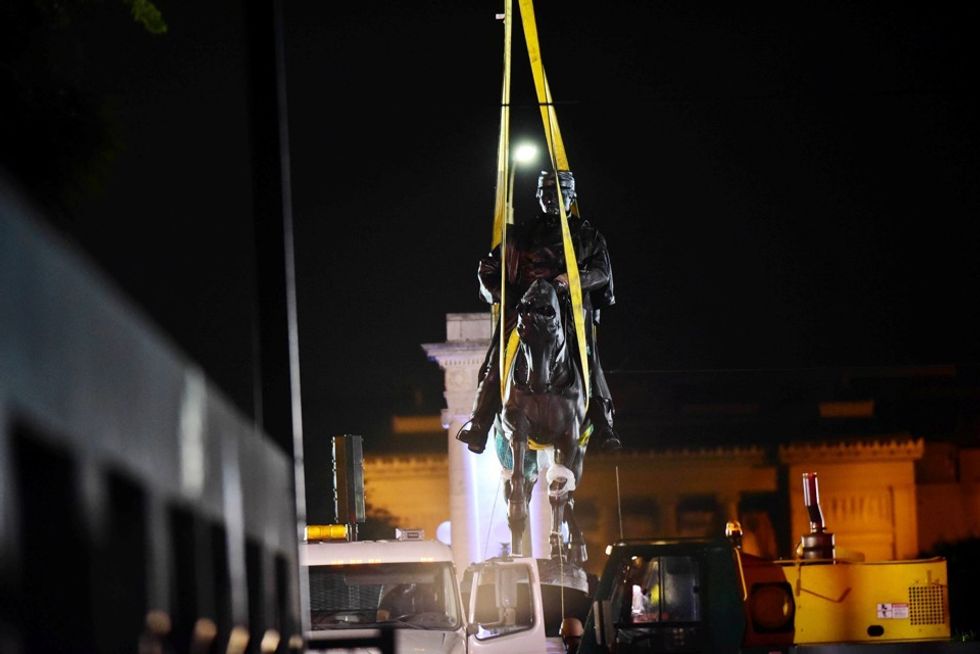On August 12th, Heather Heyer was killed while protesting at the “Unite the Right” rally – a demonstration in response to the vote to take down a Confederate statue of General Robert E Lee, which gathered hundreds of torch-bearing white nationalist, white supremacist, and/or neo-Nazi individuals – in Charlottesville, Virginia. Amid the aftermath of Charlottesville, much of our nationwide discussion has been devoted to protests, factions, and the infamous statues all over the US of Confederate symbols or heroes, sparking a debate over whether it is really “right” or “necessary” to topple said monuments in the name of progress.
Among arguably, but not always well-meaning white folk, one prevailing argument has been this: “How can we conscionably promote the removal of Confederate monuments, when remembering the Confederacy and the social state of our nation in that period is so important to our history? Is it not true that those who forget history are doomed to repeat it? Shouldn’t we have these things reminding us of where we’ve come from, so that we never repeat those horrors again?”
On the surface, this is a very tempting point of view to adopt. It’s true, we don’t want to forget our past, or pretend like the Confederacy never happened. How are we supposed to own up to our own mistakes if there are no reminders to keep us humble? But that’s just the thing; it’s a false conundrum, because these statues really don’t do what we are positing them to accomplish.
Does this look condemning to you?
Let’s get this straight, Confederate statues don’t prompt us to look upon our past with shame. They are, unequivocably, symbols of pride which honor those who participated in one of the many horrors of our history. Part of this truth is related to exactly how these images are mounted. It’s important, for instance, that these statues are considered monuments. Monuments aren’t memorials, which are intended to respect the memory of people or groups who have died or been victims.
Check out this handy website that describes the differences between similar or related concepts. It describes a monument as:
"...a structure, statue or a building that is built to honor someone notable or a special event. Monuments, in other words, are built to commemorate a notable person or an event.
[...]
The Arc de Triomphe in France, Empire State Building and the Washington Monument in America are all examples for monuments. The Arc de Triomphe is for celebrating the victory of the soldiers. Empire State Building is a monument because it commemorates the booming American economy at the period. Washington Monument was built after the death of George Washington, the first president of America. However, though it was built after the death of the president, it was built more to symbolize his ideals. That is why it is referred to as a monument. So, you can see that a monument is built to honor a person as well as to mark a special event.”
Interesting. So you’re telling me that a monument honors the person or image it represents, and is meant to convey and uplift its ideals. Such as, in the case of Confederate monuments, racism, white supremacy, and slave ownership.
Not convinced yet? Let’s take a look at some examples of public structures or fixtures that were built to commemorate other terrible periods of history or tragedies.
- The Homomonument in Amsterdam, which serves as a memorial honoring gay and lesbian men and women who have been persecuted for homosexuality. It consists of three pink triangles which serve as points of a larger triangle; the pink triangle, ever since being used as an identifier of gay inmates during the Nazi regime, has become a symbol for the queer community and thus represents the individuals this fixture is meant to remember.
- The many Holocaust remembrance museums and memorials across Germany, at the sites of WWII concentration camps, and worldwide. These range from the simple and abstract – like the Memorial to the Murdered Jews of Europe in Berlin, consisting of rows of hundreds of almost coffin-like marble blocks – to the visual and concrete, such as the Shoes on the Danube Bank in Budapest or the Hall of Names in Israel. They all identify the victims of the Holocaust; you’ll find no statues of Gestapo here.
- The Civil Rights Memorial Monument in Alabama, which commemorates 40 individuals “who died in their struggle for an equal and fair treatment of those with European and African descent in the United States.” This memorial takes its design inspiration from a quote by Martin Luther King, Jr. which compares justice to a “mighty stream,” and therefore takes the form of a fountain from wherein water streams down. This fixture therefore represents not just a tragedy or its victims, but also the values and principles of a civil rights leader during the period it honors.
What don’t these examples do? They don’t commemorate the perpetrators of injustice, but rather its victims and its defenders. This is what a good monument or memorial does. We don’t remember history best by honoring oppressors, tyrants, and racists; we remember it by honoring the innocents, and the people who fought to make said tyrannies right.
“Okay,” you may be saying to yourself now, “So maybe we could design better memorials. But these statues are still part of our history. They’re representative of the time they are from. And without them, we wouldn’t have any visuals to make us remember at all. Isn’t an imperfect monument better than none at all?”
There are a couple mistakes in this response. The first is assuming that an image of our past mistakes, displayed in public glory, is a decent or even the only way to remember our past. When you ask whether a Confederate memorial isn’t better than nothing, you are basing your question on the assumption that the alternative IS, indeed, no historical marker at all. But that’s not how things work. We remember our history not just in statues, but also in books, plaques, museums, and schools. And I want to emphasize particularly these last ones, because they’re particularly relevant in the case of remembering the Confederacy and the Civil War.
First, museums. Many people operate under the assumption that the removal of Confederate statues always ultimates in their destruction. In fact, many of these statues, once removed, are taken and instead installed within museums, which are the very picture of historical preservation. A historical museum, which is meant for education and to preserve the past, is arguably the ideal place for a statue such as this – it presents a piece of our history without honoring it by putting it on a literal pedestal out in public, where the implication is one of heroism and grandeur of memory rather than unbiased representation of the past.
Next, schools. If defenders of history should be showing up anywhere to argue for representation of the South’s Confederate past, it should be in the classroom. In German schools, the horrors of the Third Reich is mandatory curriculum for all young pupils, which is another way they ensure the bloody history of the Holocaust won't be forgotten, despite a ban against Nazi symbols. Meanwhile, in the US, Texas has been pushing to rewrite their texbooks to introduce stronger conservative themes and downplay slavery and segregation as massive parts of our history. Yes, we’re literally trying to take history out of our textbooks. If that’s not actual erasure, I don’t know what is.
But I said there were two flaws in the above argument, and there are. It’s not just that history is and should be preserved in more places than public statues; it’s also the misunderstanding of where these statues come from in the first place. You may feel misty-eyed at the idea of tearing down a long-standing historical monument, but here’s a twist for you: they’re actually not from the Civil War era in the first place.
This historian has a lot to say on the topic of Confederate statue removal, but one of his more striking points is this: “Confederate statues and flags in public places have a specific history, and it starts decades after the Civil War. In fact, the vast majority of them appeared in one of two eras: either the early 1900s to the 1920s, or circa 1950 to 1965.” For those in the crowd like myself who failed history class, let’s have a refresher.
Paraphrasing Dr. Smith, basically, the first era (1900s-'20s) was after the establishment of Jim Crow laws—remember learning about those in school? That’s the whole segregation, let’s-continue-not-to-give-equal-rights-and-opportunity-to-black-people thing. The NAACP was founded in this period in response to racial tensions; it was also a time of resurgence for the KKK. Lynchings and race riots were the name of the game. Up went the Confederate monuments, heroifying leaders of a movement founded on the slavery of African-Americans.
The second era (1950-'65) was the time of the Civil Rights movement. While every twenty-something liberal arts student nowadays has a calm, sage-like MLK poster on their dorm room wall nowadays, it’s prudent to remember that the original movement was born not from natural social progress, but rather from civil unrest. Hopeful speeches were only one aspect of the movement for civil rights; the others were disruptive demonstrations and unpleasant clashes with a highly racist social stratosphere. There was another resurgence of the KKK; parties split into sub-parties to maintain their “values” of white supremacy; and more Confederate statues came up, as though to say: “These are the figures of our America.”
Perhaps returning to Smith’s summation is best:
“[W]hen you hear about flags and statues coming down, take note of the date given as to how long they had stood. Almost all of them went up in one of these two periods (the Lee statue at the heart of the protests in Charlottesville, VA, went up in 1924; the Confederate Soldier statue toppled by a crowd in Durham, NC, went up in 1925- incidentally, the two peak years of the KKK). Know what that means? It means they are not really about the Civil War at all, they are about white supremacy and opposition to civil rights. And they are on government property. And by the way, that Confederate battle flag that Bree Newsome climbed up that flagpole to take down two years ago? It went up over the SC statehouse in 1962.”
So what can we take from this, ultimately?
Hopefully, a clearer understanding about what this “debate” is really about. The removal of Confederate statues isn’t ahistorical, or erasing the remembrance of our past. It’s a way to honor the people whose families these figures fought to enslave; it’s a way to put a kinder foot forward and refuse to uplift figures who represent little more than racism, violence, and treason.
The next time you hear that these “historic” statues are being removed from public ground, correct yourself when your instant reaction is to preserve our ugly past. Instead, consider reassessing the situation. Remember where our history really lies; remember what these monuments are actually representing; and remind yourself that there are better ways to keep hold of our country's shameful history.
























